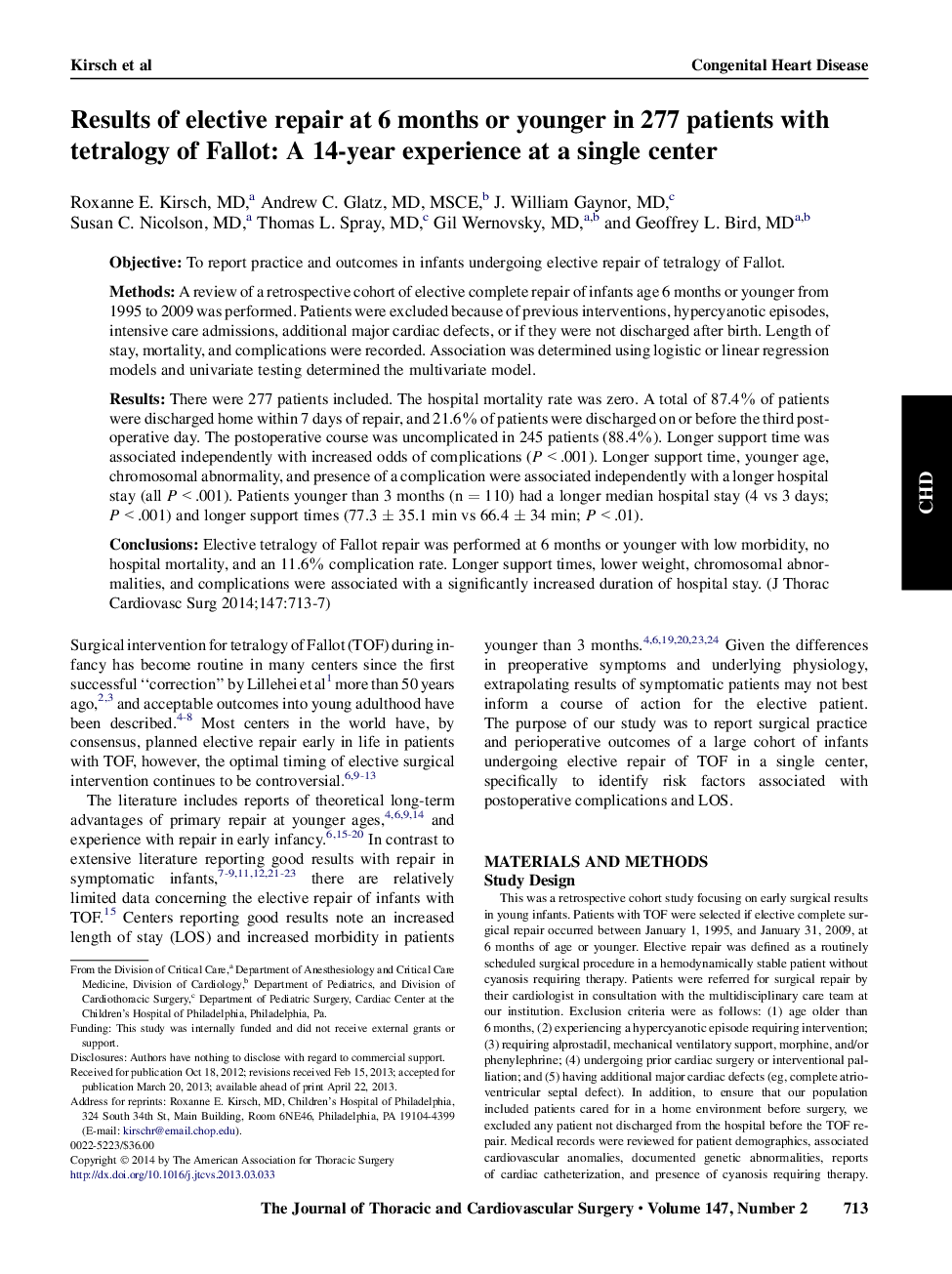| Article ID | Journal | Published Year | Pages | File Type |
|---|---|---|---|---|
| 2980226 | The Journal of Thoracic and Cardiovascular Surgery | 2014 | 5 Pages |
ObjectiveTo report practice and outcomes in infants undergoing elective repair of tetralogy of Fallot.MethodsA review of a retrospective cohort of elective complete repair of infants age 6 months or younger from 1995 to 2009 was performed. Patients were excluded because of previous interventions, hypercyanotic episodes, intensive care admissions, additional major cardiac defects, or if they were not discharged after birth. Length of stay, mortality, and complications were recorded. Association was determined using logistic or linear regression models and univariate testing determined the multivariate model.ResultsThere were 277 patients included. The hospital mortality rate was zero. A total of 87.4% of patients were discharged home within 7 days of repair, and 21.6% of patients were discharged on or before the third postoperative day. The postoperative course was uncomplicated in 245 patients (88.4%). Longer support time was associated independently with increased odds of complications (P < .001). Longer support time, younger age, chromosomal abnormality, and presence of a complication were associated independently with a longer hospital stay (all P < .001). Patients younger than 3 months (n = 110) had a longer median hospital stay (4 vs 3 days; P < .001) and longer support times (77.3 ± 35.1 min vs 66.4 ± 34 min; P < .01).ConclusionsElective tetralogy of Fallot repair was performed at 6 months or younger with low morbidity, no hospital mortality, and an 11.6% complication rate. Longer support times, lower weight, chromosomal abnormalities, and complications were associated with a significantly increased duration of hospital stay.
